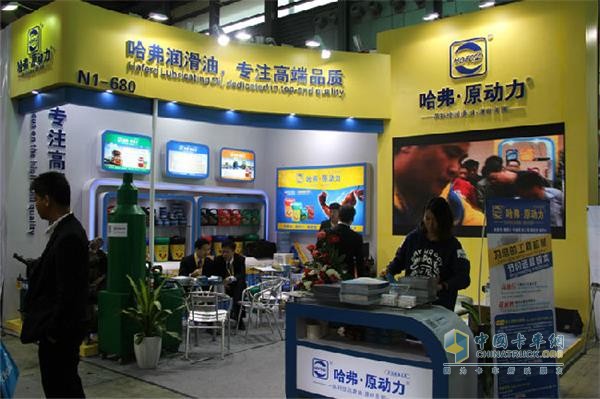Synthetic Lubricant: Or International Lubricant Development Trend
In 2013, synthetic and semi-synthetic lubricants accounted for approximately 24% of global engine lubricant consumption, and synthetic and semi-synthetic lubricants accounted for 13% of the world's total lubricant demand. According to Kline & Co's forecast, by 2023, the demand for synthetic semi-synthetic lubricants will increase to about 18%. Synthetic lubricants are widely used due to their strong characteristics. Synthetic lubricants will become the mainstream trend in the development of the lubricant industry. It is understood that high-performance synthetic base oil is used in Haval lubricants, and it is combined with ARG POWER® power factor conversion technology independently developed by the company to provide reliable protection for the engine and prolong the service life of the engine. The fully synthetic Huff lubricant produced by Haval Company is a lubricant composed of ethylene and propylene dispersed in crude oil through a complex chemical reaction. Therefore, its physical properties are better, and its thermal stability, resistance to oxidation, and ability to resist viscosity change are comparable. The oil extracted from mineral oil is much stronger. The mineral oil is obtained from crude oil through physical methods. The advantage is that the refining is relatively simple, but it can only meet the basic performance requirements of the engine and it is difficult to keep up with the development of engine technology and environmental protection requirements. Harvard high-tech synthetic lubricants can still play a powerful role in harsh environments. For example, in the high-temperature environment, the Haffer lubricant is still stable and has stronger durability; when it is in a low-temperature environment, the Haval high-tech synthetic lubricant has less paraffin content, so it can maintain good fluidity. The Huff high-tech synthetic lubricant's viscosity grade withstands the low temperature of minus 50°C. Even in the cold winter of northern China, the lubricant can be easily pumped to various parts of the engine interior, allowing the car to start quickly and provide good protection for engine parts. With the progress of society, synthetic lubricants have become popular in developed countries such as Europe and the United States. Synthetic lubricants are superior to mineral oil in engine protection, energy conservation, and environmental protection. Harvard Lubricants continues to improve the quality of lubricants, and at the same time, we always bear in mind the responsibility for energy saving and emission reduction. With the corporate tenet of “Customer Satisfaction, Responsibility to the Society, and Promotion of Enterprise Developmentâ€, we strive to create high-quality lubricants that lead the development of the times. Oil products contribute to economic and social development. 1. ZD-L15 Series Monoblock Directional Control Valves,
• Monoblock types with 1 to 7 working sections
2. DCV45 45lpm Hydraulic Motor Control Valve
Nominal diameter: G1/2; G3/8; M18*1.5
• Monoblock types with 1 to 6 working sections
3.DCV80 Monoblock Modular Valve
Nominal diameter: G1/2; G3/4;G1; G3/8; M22*1.5; M27*2
• Monoblock types with 1 to 5 working sections
4. SD14 3/4" 1 Bank Directional Control Valve
Nominal diameter: G3/4;G1; G3/8; 1/16-12UN
• Monoblock types with 1 to 6 working sections
5. DCV40 Hydraulic Control Valve
Nominal diameter: G1/2;G3/8; M18*1.5
• Monoblock types with 1 to 7 working sections
6. P40 Series Monoblock Control Valves
Nominal diameter: G1/2;G3/8; M18*1.5, 7/8-14UNF, 3/4-16UNF
• Monoblock types with 1 to 7 working sections
7. P80 Series Monoblock Control Valves
Nominal diameter: G1/2;G3/4; M18*1.5, 7/8-14UNF, 1/16-14UNF
• Monoblock types with 1 to 6 working sections
Monoblock Control Valves,Hydraulic Casting Valve,Hydraulic Monoblock Valve,Hydraulic Flow Control Valve Huaian Hy-waloil Machinery Co.,Ltd , https://www.hywaloil.com US Haffer lubricants
US Haffer lubricants
Nominal diameter: G1/2; G3/8; M18*1.5; M22*1.5
• Spool function: O, P. Y, A
• Parallel circuit• Joining port: L (screw connection)
• Spool returning type with T (spring return) and W (ball locking)
• Flow 63 l/min with pressure 160bar, 200bar, 315bar
• Spool function: O, P. Y, A
• Parallel circuit• Joining port: L (screw connection)
• Spool returning type with T (spring return) and W (ball locking)
• Flow 45 l/min with pressure 160bar, 200bar, 250bar
• Spool function: O, P. Y, A
• Parallel circuit• Joining port: L (screw connection)
• Spool returning type with T (spring return) and W (ball locking)
• Flow 100 l/min with pressure from 160bar to 315bar
• Spool function: O, P. Y, A and etc
• Parallel circuit• Joining port: L (screw connection)
• Spool returning type with T (spring return) and W (ball locking)
• Flow 120 l/min with pressure max 315bar
• Spool function: O, P. Y, A and etc
• Parallel circuit• Joining port: L (screw connection)
• Spool returning type with T (spring return) and W (ball locking)
• Flow 45 l/min with pressure 160bar, 200bar, max to 315bar
• Spool function: O, P. Y, M and etc
• Parallel circuit• Joining port: L (screw connection)
• Spool returning type with T (spring return) and W (ball locking)
• Flow 45 l/min with pressure 160bar, 200bar, max to 315bar
• Spool function: O, P. A, M and etc
• Parallel circuit• Joining port: L (screw connection)
• Spool returning type with T (spring return) and W (ball locking)
• Flow 800 l/min with pressure 160bar, max to 315bar